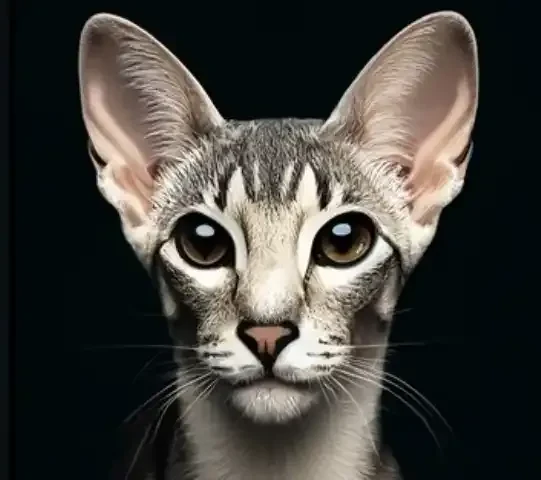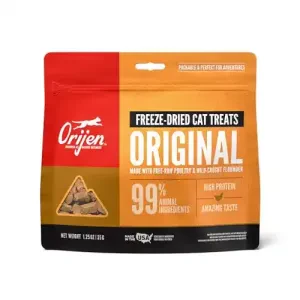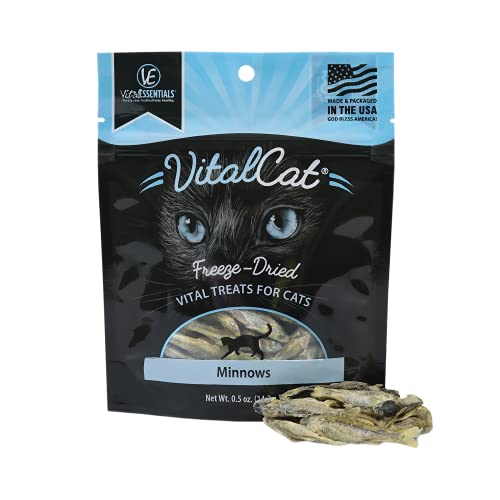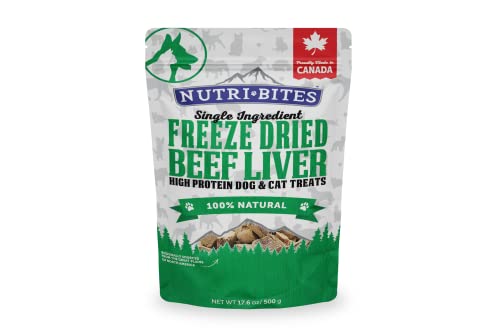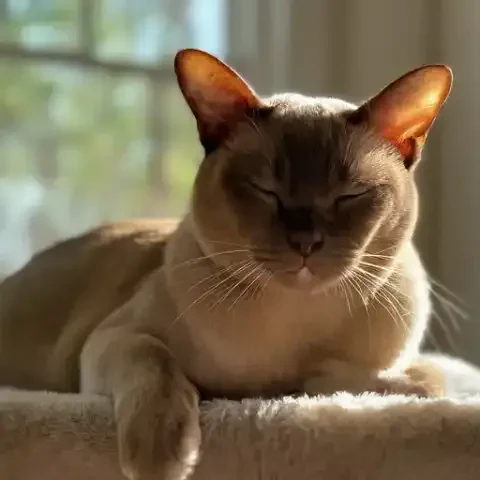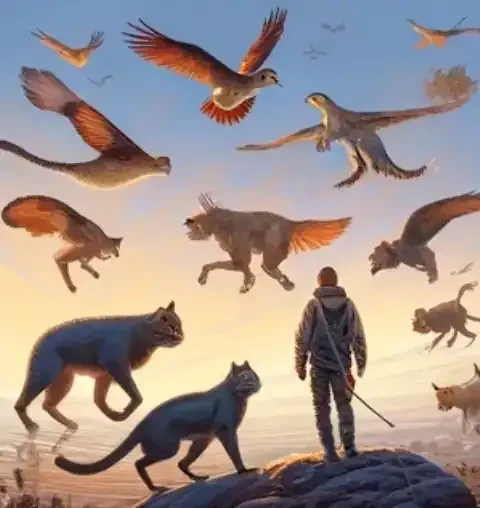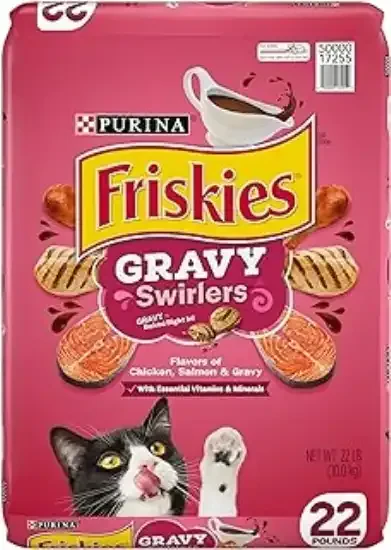In a world overflowing with furry faces and purring personalities, where countless cats charm their way into our homes and hearts, there exists a rarefied echelon of felines, breeds whispered about with reverence, admired from afar, and sought after with an almost fervent passion. These are not the familiar domestic shorthairs or the beloved, yet more common, longhairs that grace everyday life. These are the aristocrats of the feline realm, the rare and expensive breeds that embody exclusivity, luxury, and a certain mystique that sets them apart. The very names – Savannah, Khao Manee, Lykoi – resonate with an exotic allure, conjuring images of untamed beauty and hinting at price tags that can rival those of luxury cars. The fascination with these breeds is undeniable, a testament to humanity’s enduring captivation with the exceptional and the unique. But what precisely is it about these select felines that commands such premium prices and elevates them to a status so highly coveted amongst devoted cat lovers? Is it merely the cachet of owning something rare? Or are there deeper qualities, intrinsic traits that justify the whispered admiration and the significant financial investment? This article embarks on an exploration into this captivating world of rare and expensive cat breeds, venturing beyond the superficial appeal of exclusivity to uncover the true essence of their allure. We will delve into the very definition of what makes a breed “rare” and “expensive,” examining the intricate web of factors that contribute to their limited availability and elevated price points. And most importantly, we will profile a selection of these extraordinary breeds, peering beneath the surface of their often striking appearances to understand what truly makes them so desired, so passionately pursued by feline aficionados worldwide. Join us as we unlock the secrets of feline exclusivity, and discover the captivating charm of these truly remarkable cats.
Defining "Rare and Expensive": What Makes a Breed Exclusive?
To truly appreciate the world of rare and expensive cats, it is essential to first define the very criteria that bestow upon a feline breed the mantle of "rare" and the burden of "expensive." Rarity in the realm of cat breeds is not a singular, easily quantifiable metric. Instead, it is a complex tapestry woven from a variety of interconnected threads, each contributing to the limited availability and heightened mystique of these exceptional felines. One of the most significant threads in this tapestry is the sheer size of the global breed population. Genuinely rare breeds are often characterized by remarkably small numbers worldwide. This scarcity can stem from a variety of factors, including the breed's relatively recent emergence onto the feline stage, unique genetic predispositions that make breeding inherently more challenging, or simply a lack of widespread popularity compared to their more ubiquitous feline counterparts. Limited gene pools, often a consequence of small breed populations, further compound the issue of rarity. Responsible breeders of rare breeds face the delicate balancing act of preserving the breed's unique characteristics while diligently managing genetic diversity to avoid inbreeding and the potential health problems that can arise from it. This careful and conscientious approach to breeding, while crucial for breed health, inevitably contributes to a slower rate of population growth and thus, sustained rarity.
The very act of breeding rare breeds can itself be an arduous and specialized undertaking. Certain breeds, particularly those of hybrid origin, such as the Savannah and Bengal, grapple with inherent breeding complexities, especially in the earlier generations removed from their wild ancestors. Fertility issues, particularly in male offspring of early generations, are not uncommon, requiring expert breeders to navigate these challenges with skill and patience. Furthermore, some breeds, regardless of hybrid origins, may possess specific genetic predispositions or health sensitivities that demand meticulous screening and highly selective breeding practices. Maintaining breed health and minimizing the risk of genetic disorders requires significant resources, specialized veterinary care, and a deep understanding of feline genetics, all factors that limit the number of breeders capable and willing to undertake the responsibility of breeding truly rare breeds. The concept of "newness" also plays a crucial role in feline rarity. As the world of feline fancy continues to evolve, new breeds are occasionally recognized or emerge, often arising from spontaneous genetic mutations that capture the attention of breeders and enthusiasts, or through carefully planned crosses designed to combine desirable traits from existing breeds. These nascent breeds, still in the formative stages of development and standardization, are, by their very nature, rare. Breeding populations are still being established, breed standards are being refined, and the overall availability of kittens remains limited until the breed gains wider recognition and breeder participation. Geographic considerations can further amplify the perception of rarity and expense. A breed might be relatively commonplace within its country of origin, enjoying a degree of popularity within a specific region. However, when viewed on a global scale, or when attempts are made to acquire specimens outside of their native lands, these breeds can quickly transform into coveted rarities. Importation regulations, transportation logistics, quarantine protocols, and the sheer distance involved in relocating cats across international borders all contribute to increased expense and a perception of scarcity in regions far removed from the breed's point of origin.
The elevated prices commanded by rare cat breeds are a direct reflection of the multifaceted factors contributing to their rarity, coupled with the inherent value placed upon exclusivity, beauty, and specific desirable traits. The costs associated with responsible and ethical breeding of rare breeds are substantial. Reputable breeders, dedicated to the long-term health and preservation of their chosen breeds, invest heavily in a range of essential elements. Comprehensive health testing and genetic screening are paramount, ensuring that breeding cats are free from known genetic disorders and reducing the risk of passing on hereditary health issues to their offspring. High-quality nutrition, specialized veterinary care, and a meticulously maintained and stimulating environment for both breeding cats and kittens are essential for optimal health and well-being. The time, dedication, and expertise required for ethical breeding are also significant, demanding a deep commitment from breeders who prioritize the welfare of their cats above all else. These substantial investments in resources, time, and ethical practices are inherently reflected in the higher prices of kittens from reputable breeders of rare breeds. The fundamental economic principle of supply and demand is perhaps the most direct driver of elevated prices. When the number of available kittens of a particular breed is limited, while the desire to own one remains high, the immutable laws of economics dictate that prices will inevitably rise. This is particularly true for rare breeds, where the combination of carefully managed breeding programs, limited population sizes, and a fervent desire amongst enthusiasts to acquire these exceptional felines creates a significant imbalance between supply and demand, resulting in a predictable price premium. Beyond mere scarcity, the inherent qualities and desirable characteristics of many rare breeds contribute to their elevated value. Certain breeds are prized for their exceptionally striking appearances. The "wild" aesthetic of the Savannah, the luxurious rosette patterns of the Bengal, or the otherworldly hairlessness of the Sphynx are visual attributes that capture the eye and ignite desire, justifying higher prices in the minds of those seeking a visually exceptional companion. Temperament also plays a significant role. Breeds known for specific personality traits, such as the playful intelligence of the Bengal, the gentle devotion of the Russian Blue, or the social nature of the Sphynx, are highly sought after by owners seeking particular types of feline companionship. These breed-specific temperaments, carefully cultivated through selective breeding, add to the perceived value and justify the premium price. In some instances, perceived hypoallergenic qualities, although often debated in their actual effectiveness, contribute to the demand and price of certain breeds, particularly in a world where allergies to cats are relatively common. The perception, even if not entirely scientifically substantiated, that breeds like the Sphynx or Siberian may be better tolerated by allergy sufferers increases their desirability and market value. Finally, the logistical realities of international acquisition add a further layer of expense to certain rare breeds. For breeds not readily available within a particular region, such as the Khao Manee from Thailand or certain Russian lines of Russian Blues, the costs associated with importation, transportation, and navigating international animal transfer regulations are substantial. These additional financial burdens are inevitably passed on to the buyer, further elevating the price of these geographically rare breeds.
Breed Profiles: A Glimpse into Feline Exclusivity
Let us now embark on a captivating journey through the realm of specific rare and expensive cat breeds, delving into the unique attributes and fascinating histories that contribute to their coveted status within the feline world. First, our gaze falls upon the Savannah cat, a breed that embodies the very essence of feline mystique, a living testament to the alluring boundary between the domestic and the wild. The Savannah cat is an undeniable spectacle, a feline sculpted with an almost primal elegance. Its tall, slender frame, echoing the graceful lines of its Serval ancestor, is further accentuated by exceptionally long legs and a strikingly lean physique. Large, expressive ears, perched atop a wedge-shaped head, lend an air of alertness and untamed beauty. And then there is the coat – a mesmerizing canvas of spots, often bold and well-defined, reminiscent of the African savanna from which its lineage originates. The Savannah is, at its core, a hybrid breed, a carefully crafted tapestry woven from the threads of domestic cat and the Serval, a medium-sized wild cat native to Africa. Its genesis can be traced back to the late 20th century, a deliberate attempt to capture the exotic allure of the wild within a companionable domestic setting. This hybrid heritage is the very bedrock of the Savannah's rarity and expense. Breeding Savannahs is not a straightforward endeavor, particularly in the earlier generations – those closest in lineage to the Serval ancestor. Male Savannahs, especially in these early generations (designated as F1, F2, and so on, indicating their filial distance from the Serval), are often infertile, posing significant challenges to breeding programs and limiting the availability of fertile offspring. Furthermore, the legal landscape surrounding Serval ownership and hybrid cat possession is often complex and varies significantly depending on geographic location, adding another layer of regulatory hurdles to Savannah breeding and ownership. Beyond the visual allure of its wild appearance, the Savannah cat is celebrated for its remarkable intelligence, boundless energy, and a personality that often defies the typical feline stereotype. Savannahs are known for their almost dog-like loyalty, their propensity for following their owners around the house, and their eagerness to engage in interactive play. They are, however, not cats for the casual owner. Savannahs, especially early generations, demand experienced handling, a spacious environment that allows them to express their natural athleticism and exploratory instincts, and a deeply committed owner capable of providing consistent enrichment and catering to their unique needs. The price tag associated with Savannah cats is as varied as their generation, reflecting their proximity to their wild Serval ancestry. F1 Savannahs, the closest to the Serval, are the most coveted and correspondingly the most expensive, often commanding prices that begin in the tens of thousands of dollars and can escalate significantly depending on lineage and markings. Later generations, further removed from the Serval and thus easier to breed and manage, are more accessible in price, yet still retain a premium compared to the vast majority of domestic cat breeds. The ideal Savannah owner is not simply someone seeking a beautiful and unusual pet; they are individuals with a genuine understanding of and respect for the breed’s hybrid nature, experienced in handling intelligent and active animals, and dedicated to providing the specialized care, enrichment, and spacious environment that a Savannah cat truly needs to thrive.
In stark contrast to the established breed status of the Savannah and Bengal, we must address the Ashera, a feline whose very existence within the realm of recognized breeds is shrouded in controversy and best approached with a healthy dose of skepticism. Marketed with an unparalleled level of hype and an equally astonishing price point, the Ashera has been presented to the world as the ultimate hypoallergenic, designer hybrid, a feline supposedly descended from a trifecta of wild ancestry: the African Serval, the Asian Leopard Cat, and domestic cats. Images accompanying the Ashera marketing narrative depict a large, strikingly patterned cat, exuding an air of unparalleled luxury and exclusivity. However, it is crucial to dissect the Ashera phenomenon with a critical and discerning eye. Despite being aggressively marketed as a distinct and novel breed by a specific company, the Ashera is not recognized as a separate breed by any of the major, reputable cat registries worldwide. Independent genetic testing has cast significant doubt on the Ashera’s claimed multi-wild ancestry, strongly suggesting that the Ashera is, in fact, genetically indistinguishable from Savannah cats, and often specifically F1 Savannahs, simply rebranded and sold under a different, far more lucrative moniker. The much-touted "hypoallergenic" claims associated with the Ashera are also largely unsubstantiated and widely disputed within the scientific and feline breeding communities. There is no credible scientific evidence to support the assertion that Asheras are significantly, or even measurably, more hypoallergenic than any other cat breed. The rarity and exorbitant expense associated with the Ashera are not rooted in genuine genetic scarcity or the demanding intricacies of ethical breeding programs. Instead, they are almost entirely attributable to sophisticated and meticulously orchestrated marketing strategies employed by the company that originally introduced the Ashera to the market. The perceived exclusivity is artificially constructed, a carefully cultivated illusion of scarcity designed to justify astronomically inflated prices. Historically, Asheras have been marketed at prices that are truly staggering, reaching into the tens, and even hundreds, of thousands of dollars. This price point is designed to appeal to a very specific niche market of ultra-wealthy individuals seeking the ultimate status symbol pet, drawn to the allure of the exotic and the promise of hypoallergenic companionship, regardless of the lack of scientific backing for such claims and the ethical questions surrounding the breed's true origins. For prospective cat owners, particularly those drawn to the Ashera's marketing narrative, caution cannot be overstated. Thorough due diligence, independent research beyond marketing materials, and a healthy skepticism are essential. It is crucial to understand that the Ashera is not a recognized breed within the established feline fancy, and that its claimed rarity and hypoallergenic qualities are largely marketing constructs. Prioritizing ethical breeders and established breeds recognized by reputable cat registries remains the most responsible and ethical path for those seeking a feline companion.
In stark contrast to the marketing-driven mystique of the Ashera, the Bengal cat stands as a testament to the successful and ethical integration of wild beauty into a recognized domestic breed. Bengals, while sharing a hybrid lineage with Savannahs, have navigated the path of breed development with transparency and dedication, earning recognition and widespread adoration for their stunning coats and captivating personalities. The Bengal’s most defining feature is undoubtedly its coat – a breathtaking tapestry of spots or marbling that evokes the untamed elegance of the Asian Leopard Cat, its wild ancestor. These are not merely spots or stripes; they are intricate rosettes, circular markings that mimic the jaguar’s distinctive pattern, or swirling marble patterns that ripple across the feline form like currents in a stream. Adding to the coat’s allure is the often-present “glitter gene,” a unique genetic trait that imbues the Bengal’s fur with a sparkling, iridescent sheen, catching the light and further enhancing its visual drama. The Bengal breed’s origin story is rooted in the deliberate hybridization of domestic cats with Asian Leopard Cats, a small wild cat species native to Asia. While the Asian Leopard Cat ancestry contributes to the Bengal’s exotic appearance and inherent athleticism, generations of careful breeding have successfully domesticated the breed, creating a feline companion that is both visually striking and temperamentally well-suited to domestic life. This hybrid lineage, while the source of their captivating beauty, also contributes to the Bengal’s relative rarity and premium price point. Breeding for specific rosette or marbled patterns, maintaining the desirable “glitter” coat quality, and adhering to breed standards that emphasize both wild appearance and domestic temperament require selective breeding expertise and dedicated breeders committed to ethical practices. Beyond their visual appeal, Bengals are renowned for their energetic, intelligent, and playful personalities. They are active and inquisitive cats who thrive on interactive play, puzzle toys, and opportunities to explore their environment. They are not lap cats in the traditional sense, but rather engaging and interactive companions who form strong bonds with their families and delight in playful interaction. Prices for Bengals are influenced by a range of factors, including coat quality, the desirability of rosette or marbled patterns, lineage, and the reputation of the breeder. Bengals exhibiting highly sought-after rosette markings, exceptional pedigree, and show potential command the highest prices, often ranging from several thousand to tens of thousands of dollars for truly exceptional specimens. For those drawn to the Bengal's unique blend of wild beauty and domestic companionship, the ideal owner is someone who leads an active lifestyle, appreciates interactive play and feline intelligence, is willing to provide ample enrichment opportunities to satisfy their energetic nature, and is captivated by the visually striking and perpetually playful Bengal personality.
In a dramatic departure from the luxuriously coated breeds, the Sphynx cat presents an entirely different aesthetic, one defined by its striking hairlessness and captivatingly wrinkled skin. The Sphynx, often described as feline velvet incarnate, possesses a unique and almost otherworldly beauty that challenges conventional notions of feline attractiveness and elicits strong reactions – adoration from some, initial apprehension from others, but rarely indifference. While commonly referred to as “hairless,” the Sphynx is not entirely devoid of fur. Instead, they are covered in a fine, downy fuzz, a barely perceptible layer that lends their skin a velvety softness to the touch. Their wrinkled skin, a defining characteristic amplified by the lack of insulating fur, accentuates their muscular physique and contributes to their distinctive appearance. Large, expressive ears, often disproportionately sized for their wedge-shaped heads, and intensely colored, almond-shaped eyes further enhance their unique and unforgettable visage. The Sphynx’s hairless trait is not a product of deliberate hybridization, but rather the result of a naturally occurring genetic mutation. This spontaneous mutation first arose in Canada in the 1960s, and dedicated breeders recognized the unique appeal of these hairless felines, selectively developing and refining the trait into the established Sphynx breed we know today. The genetic distinctiveness of the hairless mutation, coupled with the specialized breeding required to maintain breed health and desired physical traits, contributes to the Sphynx’s relative rarity and premium price point. While the Sphynx’s lack of coat is its most striking visual attribute, it also imbues the breed with a perceived, and often sought-after, hypoallergenic quality. While no cat is truly non-allergenic, Sphynx cats produce less dander, the primary allergen source for cat allergies, than many other breeds, making them a popular choice for individuals with mild to moderate cat allergies (though reactions still vary significantly). However, their hairlessness also necessitates specific care considerations. Sphynx cats are more sensitive to temperature fluctuations than coated breeds, requiring indoor-only environments and protection from both extreme heat and cold. Their lack of fur also means they require regular skin care, including bathing, to remove natural skin oils and prevent skin issues. Beyond their unique physical requirements, Sphynx cats are renowned for their affectionate, social, and often delightfully mischievous personalities. They are ardent heat-seekers, often found curled up in sunny spots or snuggled under blankets, and they are intensely people-oriented, thriving on human attention and interaction. Sphynx cats are lap cats par excellence, demanding cuddles and readily offering purrs in exchange for affection. Prices for Sphynx cats are reflective of their genetic uniqueness, the specialized care required by ethical breeders, and the consistent demand for their distinctive appearance and affectionate temperaments. Kittens from reputable breeders typically command prices ranging from a few thousand to several thousand dollars, depending on lineage, show potential, and breeder reputation. The ideal Sphynx owner is a dedicated and attentive individual, prepared to provide an indoor-only lifestyle, commit to regular skin care routines, understand the breed’s temperature sensitivities, and, most importantly, wholeheartedly embraces and appreciates the uniquely affectionate and often hilariously attention-seeking personality of the Sphynx cat.
